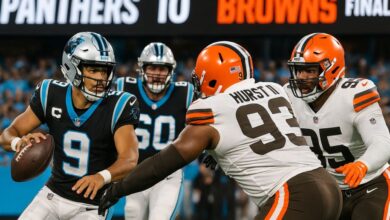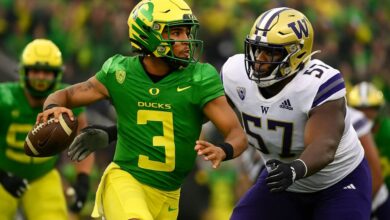Houston Texans vs Chicago Bears Match Player Stats: Full Game Breakdown & Analysis

The Houston Texans vs Chicago Bears match player stats have once again sparked conversations among NFL fans and analysts alike. The 2024-25 season brought a thrilling clash between two franchises at different stages of their evolution: the Houston Texans, fueled by a rising young quarterback in C.J. Stroud, and the Chicago Bears, driven by hope and the debut promise of rookie sensation Caleb Williams. The game—played on September 15, 2024—ended with the Texans edging out the Bears 19-13 in a nail-biting contest that displayed tactical intelligence, individual brilliance, and high-pressure football.
In this comprehensive breakdown, we’ll explore the Houston Texans vs Chicago Bears match player stats today, key performances, team strategies, and historical context—all backed by official stats and analysis from top sports sources like CBS Sports, Stathead, and team reports.
Game Overview: Texans 19 – Bears 13
This matchup wasn’t a high-scoring shootout—it was a chess match between two defenses trying to outlast one another. The Houston Texans secured victory through consistent field-goal execution and efficient time management. Ka’imi Fairbairn’s four field goals, three of which were over 50 yards, ultimately became the difference between victory and defeat.
Final Score:
Houston Texans 19 – Chicago Bears 13
Location: NRG Stadium, Houston
Date: September 15, 2024
The Texans improved to a strong early-season record under head coach DeMeco Ryans, while the Bears continued to rebuild, searching for offensive rhythm with rookie quarterback Caleb Williams at the helm.
Quarterback Duel: Stroud vs. Williams
Quarterback play dominated the narrative, and both young stars had something to prove.
C.J. Stroud – Houston Texans
-
Completions/Attempts: 24/35
-
Passing Yards: 260
-
Touchdowns: 1
-
Interceptions: 0
-
Completion Rate: 68.6%
Stroud’s performance was composed, intelligent, and efficient. He avoided turnovers and managed the game with the poise of a veteran. He connected frequently with Nico Collins and Tank Dell on intermediate routes that kept the chains moving. His lone touchdown came from a red-zone pass where he displayed elite pocket awareness, shifting outside pressure and hitting his target in stride.
Stroud’s Houston Texans vs Chicago Bears player stats underline his continued development as one of the most accurate and disciplined quarterbacks in the league. His ability to recognize coverage changes pre-snap and adjust accordingly was crucial in avoiding Chicago’s aggressive blitz packages.
Caleb Williams – Chicago Bears
-
Completions/Attempts: 17/31
-
Passing Yards: 186
-
Touchdowns: 0
-
Interceptions: 2
-
Sacks Taken: 4
On the other side, Caleb Williams endured a difficult night. Facing relentless pressure from Houston’s defensive front—anchored by Will Anderson Jr. and Jonathan Greenard—Williams struggled to find rhythm. His two interceptions, one deep over the middle and another forced throw into double coverage, cost the Bears momentum in the second half.
Despite the mistakes, Williams flashed potential, particularly in his pocket movement and on-the-run throws. His Houston Texans vs Chicago Bears match player stats today don’t fully capture his mobility and ability to extend plays, qualities that will make him a long-term weapon for Chicago.
Rushing & Ground Control
Houston Texans Rushing
-
Dameon Pierce: 15 carries, 61 yards
-
Devin Singletary: 7 carries, 29 yards
-
C.J. Stroud: 2 carries, 12 yards
Houston’s ground game wasn’t flashy, but it was functional. Pierce’s bruising inside runs helped control the clock, setting up Fairbairn’s field-goal opportunities. The Texans averaged just under 4 yards per carry but dominated time of possession with extended drives, wearing down Chicago’s front seven.
Chicago Bears Rushing
-
Khalil Herbert: 10 carries, 58 yards, 1 TD
-
Roschon Johnson: 6 carries, 31 yards
-
Caleb Williams: 3 scrambles, 17 yards
The Bears’ rushing attack was the highlight of their offense. Herbert’s touchdown run in the first quarter—a powerful 12-yard burst through the right gap—gave Chicago early momentum. However, Houston adjusted quickly, stacking the box and daring the rookie quarterback to beat them through the air.
Receiving & Passing Connections
Texans Receiving Leaders
| Player | Receptions | Yards | Touchdowns |
|---|---|---|---|
| Nico Collins | 6 | 82 | 1 |
| Tank Dell | 5 | 71 | 0 |
| Dalton Schultz | 4 | 42 | 0 |
| Noah Brown | 3 | 36 | 0 |
Collins continued his impressive chemistry with Stroud. His deep-crossing routes and strong hands in traffic made him the go-to target on third down. Dell provided speed and separation on the outside, while tight end Schultz delivered key conversions in short-yardage scenarios.
Bears Receiving Leaders
| Player | Receptions | Yards | Touchdowns |
|---|---|---|---|
| D. J. Moore | 5 | 68 | 0 |
| Keenan Allen | 4 | 51 | 0 |
| Cole Kmet | 3 | 33 | 0 |
Despite solid production from their top receivers, the Bears couldn’t convert yardage into points. The Texans’ zone coverage limited explosive plays, forcing Chicago to rely on short passes and screens. Williams’ hesitance to attack downfield allowed Houston’s safeties to sit on routes, leading to multiple turnovers.
Defensive Dominance & Key Tacklers
Both defenses played at an exceptional level, with Houston’s front seven emerging as the decisive factor.
Houston Texans Defense
| Player | Tackles | Sacks | Interceptions |
|---|---|---|---|
| Will Anderson Jr. | 6 | 1.5 | 0 |
| Jalen Pitre | 7 | 0 | 1 |
| Blake Cashman | 9 | 0 | 0 |
| Derek Stingley Jr. | 5 | 0 | 1 |
Houston’s defensive backs capitalized on pressure created by the front line. Stingley and Pitre both recorded interceptions, each halting potential scoring drives. Anderson’s versatility—rushing from multiple alignments—disrupted Williams’ timing, making the Bears’ passing game one-dimensional.
Chicago Bears Defense
| Player | Tackles | Sacks | Forced Fumbles |
|---|---|---|---|
| Tremaine Edmunds | 10 | 0 | 0 |
| Montez Sweat | 5 | 1 | 0 |
| Jaylon Johnson | 6 | 0 | 1 |
The Bears’ defense held Houston to one touchdown and forced a red-zone fumble early in the third quarter. However, their inability to get off the field on third down proved costly, as Stroud repeatedly converted mid-range passes to sustain drives.
Special Teams: The X-Factor
Ka’imi Fairbairn was unquestionably the hero of the night.
-
Field Goals: 4/4 (52, 50, 44, and 33 yards)
-
Extra Points: 1/1
His consistency under pressure sealed the Texans’ win. Each long-distance conversion came in crucial moments when the offense stalled.
For Chicago, Cairo Santos went 2/2 on field goals, including a 49-yarder, but didn’t have the same impact as Fairbairn.
Team Statistics & Game Trends
| Category | Texans | Bears |
|---|---|---|
| Total Yards | 365 | 292 |
| Passing Yards | 260 | 186 |
| Rushing Yards | 105 | 106 |
| Time of Possession | 33:48 | 26:12 |
| Third-Down Efficiency | 7/14 | 4/13 |
| Turnovers | 0 | 2 |
| Penalties | 4 (32 yards) | 7 (58 yards) |
These numbers tell the full story: Houston controlled the ball longer, converted more third downs, and avoided turnovers. The Bears’ penalties and giveaways erased opportunities that could have changed the game’s outcome.
Historical Head-to-Head Context
According to data from Stathead and Pro-Football-Reference, the Texans now hold a winning record against the Bears in all-time meetings.
Between 2004 and 2024, the Houston Texans vs Chicago Bears match player stats all show:
-
Passing Yards: Texans 1,466 vs Bears 1,150
-
Passing Touchdowns: Texans 9 vs Bears 6
-
Rushing Yards: Bears 832 vs Texans 764
-
Rushing TDs: Bears 6 vs Texans 4
The data confirms what fans have sensed: Houston’s more balanced attack and strong defensive units have given them the edge historically, while Chicago’s reliance on the ground game has produced mixed results.
Tactical Breakdown: How Houston Won
a) Strategic Patience
DeMeco Ryans’ coaching philosophy—control the clock, avoid mistakes—worked perfectly. Instead of forcing deep plays, the Texans took short gains and let Fairbairn finish drives.
b) Defensive Versatility
Houston alternated between a 4-2-5 nickel look and a disguised blitz scheme that kept Williams guessing. Pitre’s interception in the third quarter came from a disguised coverage that baited a throw into double coverage.
c) Offensive Discipline
Stroud’s quick decision-making minimized hits and sacks. The offensive line, anchored by Laremy Tunsil, provided enough stability for play-action passes to work effectively.
What the Stats Reveal About Each Team’s Future
The Houston Texans vs Chicago Bears match player stats offer a glimpse into two teams on different trajectories.
Houston Texans Outlook
The Texans appear ready to contend in the AFC South. Stroud’s maturity, combined with a disciplined defense, makes them a dark-horse playoff team. The team’s emphasis on efficiency over explosiveness is paying off, and Fairbairn’s reliability adds a critical edge in close contests.
Chicago Bears Outlook
For the Bears, patience is key. Caleb Williams has all the tools to succeed—arm strength, mobility, and vision—but will need time to adapt to NFL speed. The defense, while talented, requires better support from an offense that can sustain drives and limit turnovers.
Fans’ & Analysts’ Reactions
Across sports blogs and fan communities, the sentiment was unanimous: Houston’s composure and defensive execution stood out. Analysts praised C.J. Stroud for his game management, while Bears supporters focused on Williams’ flashes of brilliance amid rookie errors.
NFL writers at CBS Sports highlighted Fairbairn’s “veteran poise,” noting that his four field goals were the deciding factor. ChicagoBears.com acknowledged that despite the loss, the defense’s resilience against a potent Texans offense was encouraging.
Final Thoughts: Lessons From the Texans-Bears Clash
This game exemplified the NFL’s evolving narrative—young quarterbacks leading the next generation, defensive masterminds dictating tempo, and special teams deciding outcomes. The Houston Texans vs Chicago Bears match player stats today not only reflect one contest but illustrate broader trends: efficiency, turnovers, and situational awareness matter more than highlight-reel plays.
As both franchises move forward, Houston’s win reinforces their identity as a disciplined, playoff-caliber team, while Chicago’s performance underscores the growing pains of a roster in transition.
About Blog Loom
This in-depth article on Houston Texans vs Chicago Bears match player stats is presented by Blog Loom, your trusted destination for in-depth NFL coverage, player analytics, and weekly game breakdowns. Stay tuned to Blog Loom for more exclusive player-by-player insights, team stats, and tactical analysis that help you see the game beyond the scoreline.
You may also visit:
Colts vs New York Giants Match Player Stats: Breaking Down the Numbers Behind the 2024 Showdown




